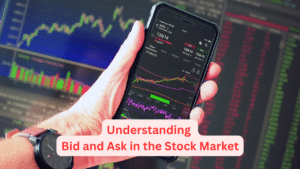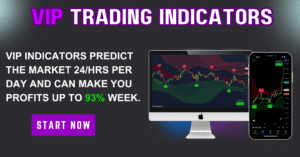 Understanding Bid and Ask in the Stock Market: A Beginner’s Guide
Understanding Bid and Ask in the Stock Market: A Beginner’s Guide
When entering the world of stock trading, one of the first concepts you’ll encounter is the “bid” and “ask” prices. These two terms are fundamental to how stocks are bought and sold and can significantly affect your investment outcomes, whether you’re trading actively or investing for the long term.
What Are Bid and Ask?
At its core, the bid is the highest price that a buyer is willing to pay for a stock at a given moment. The ask (also known as the “offer”) is the lowest price at which a seller is willing to sell the same stock. The difference between these two prices is known as the spread.
Let’s consider a simple example:
- Bid: $99.50
- Ask: $100.00
This means that buyers are currently offering to buy the stock at $99.50, while sellers are asking to sell it at $100.00. No transaction will occur unless either the buyer agrees to pay $100.00 or the seller agrees to accept $99.50—or they meet somewhere in between.
The Spread: Why It Matters
The spread (in this case, $0.50) is crucial because it represents a kind of negotiation zone. It’s also an indicator of market liquidity. A narrow spread (like $0.01 or $0.02) typically indicates a highly liquid stock—one with many buyers and sellers. A wider spread often means the stock is less liquid and may be more volatile.
For day traders and high-frequency traders, the spread can be a significant factor in profit and loss. For example, buying at the ask and immediately selling at the bid would result in a loss equal to the spread (excluding commissions and fees). Therefore, timing and price matters greatly.
Who Sets the Bid and Ask?
Bid and ask prices are not randomly assigned; they are determined by market participants. In most markets today, this is facilitated through electronic trading platforms where buyers and sellers post their orders. The highest bid and the lowest ask become visible in what’s known as the Level I quote.
Behind these visible quotes, there are often multiple layers of other bids and asks, forming what is called the order book. A more in-depth look at this data, called Level II quotes, reveals the number of shares available at each price level and the depth of the market.
Market Orders vs. Limit Orders
Understanding bid and ask becomes even more important when choosing the type of order to place:
- Market Order: When you place a market order to buy, you’ll pay the current ask price. If you’re selling, you’ll receive the current bid price. These orders execute immediately but may result in a less favorable price if the spread is wide.
- Limit Order: Here, you specify the maximum price you’re willing to pay (if buying) or the minimum price you’re willing to accept (if selling). The order will only execute if the market reaches your price, which gives you more control but may take longer or not execute at all.
Bid and Ask in Real Life
Suppose you’re watching a tech stock, and you see the following:
- Bid: $150.10 (1,000 shares)
- Ask: $150.15 (800 shares)
This means there are buyers willing to purchase 1,000 shares at $150.10 and sellers willing to sell 800 shares at $150.15. If a new buyer enters and offers $150.15 (matching the ask), they can purchase the 800 shares immediately. Once those shares are bought, the next best ask (which might be $150.20 or higher) becomes the new lowest ask.
How Professionals Use Bid-Ask Data
Professional traders often analyze bid-ask spreads to determine market sentiment and pressure:
- A rising bid price can indicate increasing demand.
- A falling ask price might suggest sellers are eager to exit positions.
- A surge in volume at a specific bid or ask can show where large institutions are positioning themselves.
Some traders even “read the tape” by watching how quickly bid and ask prices move and how large the incoming orders are. This is often part of technical analysis strategies in day trading and algorithmic trading.
Impact of Bid-Ask on Retail Traders
For the average retail investor, the bid-ask spread usually plays a small but still relevant role. On high-volume stocks like Apple or Microsoft, spreads are typically just a penny or two, so market orders won’t create much slippage. But for smaller-cap or lightly traded stocks, the spread can be large—sometimes even several dollars—making it more critical to use limit orders to avoid overpaying or underselling.
Final Thoughts
Understanding bid and ask is key to navigating the stock market efficiently. These prices are more than just numbers; they are a snapshot of real-time supply and demand. Whether you’re placing your first trade or analyzing a volatile stock, knowing how bid and ask work helps you make smarter, more informed decisions.
So the next time you log into your trading app and see two prices next to a stock ticker, remember: one is what someone is willing to pay, the other is what someone is willing to accept. Your job as an investor is to find your place between those two—and ideally, do so in a way that supports your financial goals.
